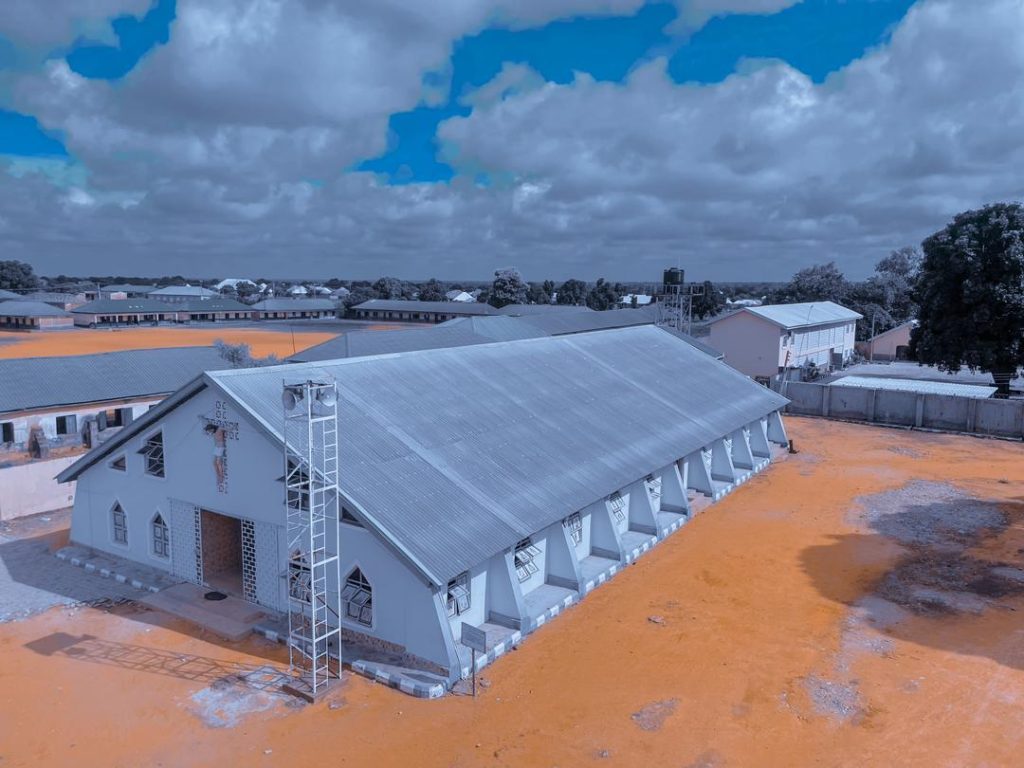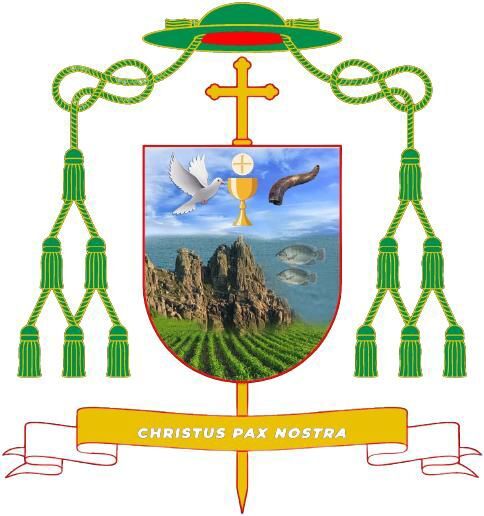The History of Wukari Diocese
ABOUT US
- Home
- History of Wukari Diocese

ABOUT US
The History of Wukari Diocese
What we celebrate today as the Catholic Diocese of Wukari, is the coming to fruition of consistent missionary activities pioneered by the Congregation of the Holy Spirit (Congregatio Sancti Spiritus- CSSp) Fathers otherwise known as the Spiritans or Holy Ghost Fathers for over a century ago, precisely in 1902. Considering the teething challenges of the early beginning, it was indeed a bold decision by the French missionaries to plant the seed of the faith not just on the Southern part of Nigeria but also across the Benue valley and it’s environs.
In 1900, Fr. Leon Lejeune was appointed Superior and Prefect Apostolic of Southern Nigeria where he had a successful mission among the Igbo people. He was excited with the information he heard about the vast Northern territory and its ‘pagan’ people and became so determined to expand the mission towards that region.
On 23 August, 1903, Lejeune set out on the steamship called ‘NKISSI’, from Onitsha, making a stop-over at Lokoja, to see Lugard, the British High Commissioner for Northern Nigeria. Lugard told Lejeune that the Tiv people were fiercely opposed to the Fulani Jihadists and slavers. They also opposed the Colonialists whom they considered as no different from the Fulanis. According to Lugard, by giving the missionaries a mandate, “we will have to correct this impression. It is a task that is the responsibility of missionaries”.
Lejeune continued on his journey, eventually arriving Ibi on September 6, 1903. He was received by the resident local chief, Mr. Hewby, and his council who were ready to give a portion of land for the mission. He planned to establish two missions: the Parish, to be called Holy Cross at Ibi, and a Home for Freed Slaves of St. Peter Claver along Wukari road. After ten days in Ibi, he returned to Onitsha. It was hoped that men would be sent to the mission at Ibi. Unfortunately, this never happened due to speculations about the distance between Ibi and Onitsha which might likely cut off confreres stationed there from others. Another speculation had to do with the cost of supplying such a remote mission with essentials of life at a great cost. This first attempt was aborted as the missionaries rather settled for a mission at Dekina, which was much closer to Onitsha. In a letter sent to the Dekina inhabitants, Lejeune wrote that Dekina was a more suitable place for a mission school and a village for liberated slaves. It suited them more than Ibi; the food was cheaper, the population entirely pagan (unlike Ibi that already had an active Muslim population) and expenses quite smaller in comparison to those that would be necessary for a mission at Ibi.
THE SECOND ATTEMPT
By the 1930s, the Holy Ghost Fathers who had been stationed at Ogoja in 1921, made a foray northward into the Tiv land. In 1934, the first Catholic mission station was opened at Korinya north of the Ogoja Province. From Korinya they moved into the hinterlands, appointing Catechists and CRI teachers. Fr. Becker reached Kashimbila village, in present day Takum Local Government Area, and appointed John Ahire, a Tiv man as Catechist. Kashimbila, therefore, has the distinct honour of being the oldest Catholic Community in Wukari Diocese. Thus, unlike Ibi, Kashimbila became the soil on which the faith was planted and from which the mission work expanded.
In 1933, Fr. J. Kirsten, who later became the prefect Apostolic of the Benue Apostolic Prefecture, visited Wukari on September 9 of same year with the aim of surveying for a possible mission. He visited the Aku Uka who graciously welcomed them. He asked for land to begin a station, at least temporarily. Land was given but in October of same year, the plan was set aside because of lack of fund. However, in 1938, Fr. Strick visited Wukari again from Gboko. By now there was a small Catholic community in existence already, mostly Igbos and Cameroonians who use to gather at Chonku.
There, Mass was celebrated and infant baptism administered on five infants. Chonku became the second Catholic Community in the history of the present Diocese of Wukari as the outstation of Korinya then.
By 1939, a parcel of land was secured with a Certificate of Occupancy (CofO) granted, it was a 3.89acres of land for a mission station in Wukari that belonged to the SUM missions who were previously on ground from 1906. By 1945, after the Second World War, Fr. Bert Maher arrived Gboko and set about revitalizing the Wukari mission. In order not to forfeit the acquired land, he quickly built a house on the land between 15 April, 1945 and November 1, 1945. This house served as a presbytery of St. Mary’s until a new one-storey house was built (the present Bishop’s House) by Rev. Fr.
Ignatius Kaigama (present Archbishop of Abuja and Metropolitan of Abuja Ecclesiastical Province) in 1989.
Frs. James Simpson and William O’Neil were seconded to Fr. Maher. They established CRI classes and taught the children who were mostly of Tiv extraction. Owing to the difficulty in moving from one place to another, Fr. Simpson was appointed to reside in Wukari (1949); he was joined by Fr. Grandin. It is important to note the role this primary school played in enhancing the work of the missionaries. Because the SUM were actively on ground already (1906), it was almost impossible to get the locals to convert to the Catholic Faith. The Catholic community was made up of mainly Igbos, Ogojas, Cameroonians and Tiv. Despite their long-time presence, the SUM did not open any school. The strategy of establishing St. Mary’s Primary School afterwards actually worked effectively for the Catholic Church. Many Jukun boys were enrolled in it and many of them went on to become outstanding personalities and shining examples in their chosen careers. The initial nucleus consisted of David Dodo (First President of the National Laity Council), Bernard Adi, Anthony Ada, David E. Polycarp, Michael Gebe, David Agyo, David Auta (who became a Commissioner of Police), Anthony Barau (Prof.), Anthony Ajiduku, Danladi Bajo etc. Other schools were later opened in Ashitsa, Ibua and Demelu within the Tiv communities.
Following the success of St. Mary’s, St. Paul’s College was established in January
1970. Providentially, it is the grounds of this same St. Paul that the erection of the new Diocese of Wukari and the consecration of its first bishop would take place. Mr. Raphael Uche, an Igbo man who was the Headmaster of St. Joseph’s Primary School in Takum was posted to start this school. Later on, the Marist Brothers arrived in 1972 to staff the school. Bro. Michael Oruche was the Principal. Sadly, this school was one among the mission schools which were taken over by the government of the day when Wukari and Takum, which were then part of the Benue-Plateau State, became part of the newly created Gongola State in 1976. St. Paul’s College was subsequently renamed Government Secondary School, Wukari, for which compensations were paid in 1977.
Takum was opened as a station when Fr. Maher posted Catechist NN Nche from Kashimbila. In 1948, a plot was given and the first CRI cum Church was built there.
The Ukwe Takum was personally present to witness its construction. The Church, first known as St. Patrick, which served as a refugee camp during the Tiv-Fulani crisis of 1960 was later renamed Holy Family, an outstation served from Wukari. Being a mixed community, services were conducted in English and Hausa. Wukari itself became a parish in the year 1957 and was followed by Takum in 1976 then later followed by Holy Spirit Wukari, Gindin-Dorowa, Ibi, Chanchanji, Donga, Amadu, Sarkin-Kudu, Mararraba amongst others all belonging to the new Diocese of Wukari.
When Gongola State was created from the former North-East State in February 1976, it included the Wukari division of the former Benue-Plateau State. The Wukari division was made up of the Wukari, Takum and Donga chiefdoms with the Aku Uka of Wukari, the Gara of Donga and the Ukwe of Takum as their paramount rulers. In the line of Christian history, the inclusion of Wukari division strengthened the position of Christianity in Gongola State.
This inclusion of Wukari division in Gongola State meant that the State now had citizens who were members of three Dioceses of Maiduguri, Yola and Makurdi. This was a huge inconvenience both at the temporal and the ecclesial levels. One of such inconveniences was the challenge of distance. For instance, the Wukari division which was part of Makurdi Diocese and yet within Gongola State had closer ties with the Diocese of Yola as is seen in the ordination of Fr. Richard Tyokohol of Yola Diocese which took place in Wukari in 1980.
The year 1982 therefore remains pivotal in the history of Wukari Diocese as we have it today in the sense that on 5th November of the said year, Wukari and Takum Parishes were annexed to Yola Diocese after negotiations between bishops Sheehan of Yola and Murray of Makurdi Dioceses were reached to readjust these ecclesiastical jurisdictions to be in tandem with the State boundaries.
To highlight the evangelization of the Serti and Sardauna axis which form an important portion of the Diocese of Wukari, the initiative of late Bishop Sheehan of Yola must be noted. Shortly after his episcopal ordination in 1971, he initiated systematic missions in the central and southern axis of present-day Taraba State which were under the then Yola Diocese. Bali (not part of Wukari Diocese) was chosen and given priority as the centre of the new mission station which attended to the Catholic communities spread across Serti and Gembu. From this perspective, we can glean the beautiful confluence of dual missionary fronts – one cascading from the Makurdi axis and the other from the Yola axis. While the Irish Augustinians were the fathers of the Yola front, the Spiritans
were of the Makurdi front.
While giving glory to God the Father who sends sowers into the vineyard, and God the Son who remains the missionary par excellence and the Holy Spirit that makes the seed of evangelization fruitful, we can safely say today that the vision and mission of 1902 has come to a glorious chapter. Like we usually sing in the National Anthem, “may the labour of our heroes past not be in vain.”
Hence, the birth of a new Diocese of Wukari is certainly the apparent fruit of the labour of our past heroes in the faith – that is, the generations of great missionaries who sowed the seed of the gospel with their lives and are now eternally reaping the fruit of their seasoned commitment in the bosom of the Lord. Notably, the new diocese is situated in the Southern part of Taraba State, Nigeria, in West Africa and has within its jurisdiction half of the political map of the State which includes eight Local Government Areas such as Donga, Gashaka, Ibi, Kurmi, Sardauna, Takum, Ussa and Wukari and two Special Development Areas – Ndola and Yangtu. May all hands be on deck to move the new Diocese forward – all to the glory of God.
Most of the information used in constructing the brief history of Wukari Diocese is taken from the Revised edition of Raymond Hickey’s book on the History of the Catholic Diocese of Yola (2020)
